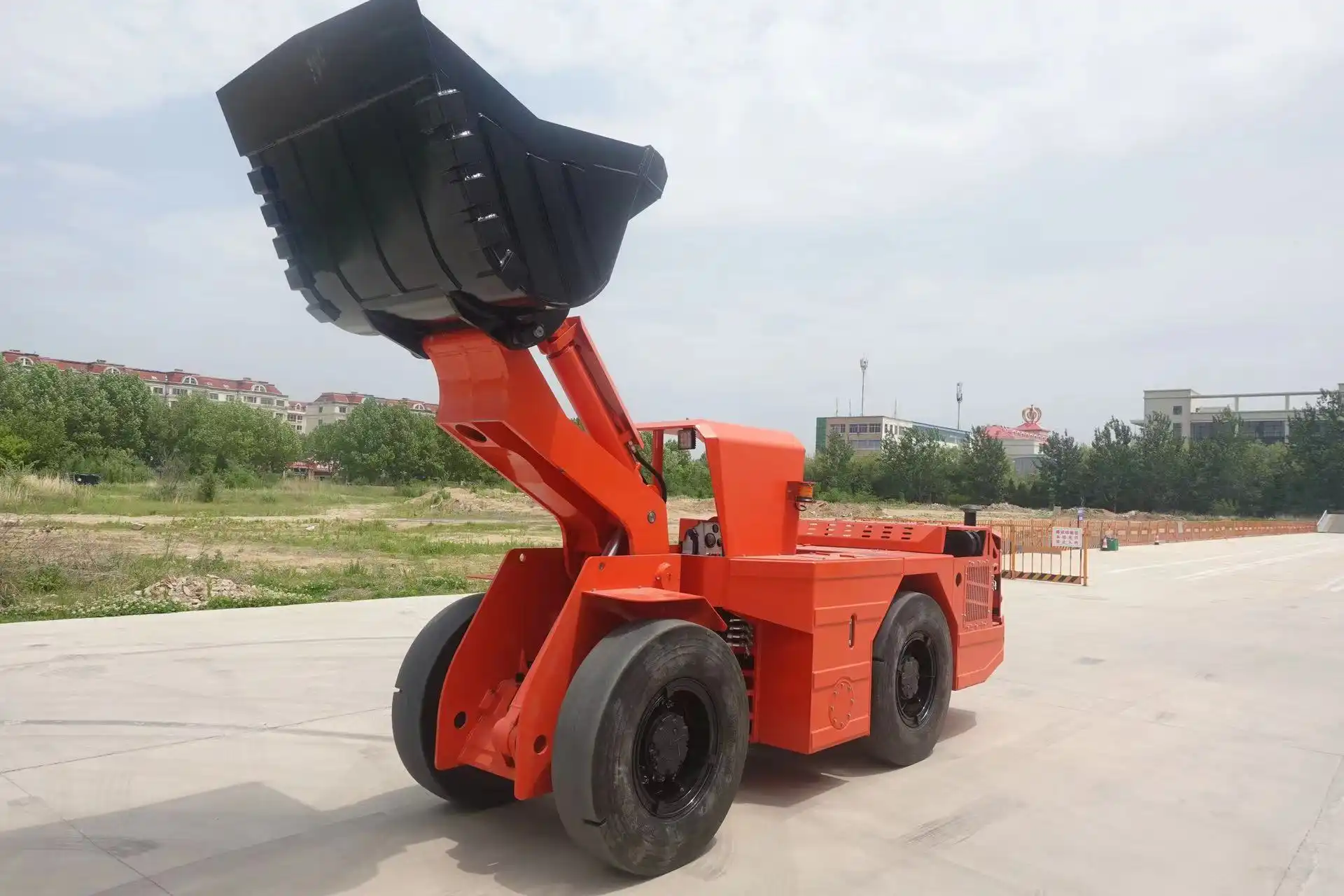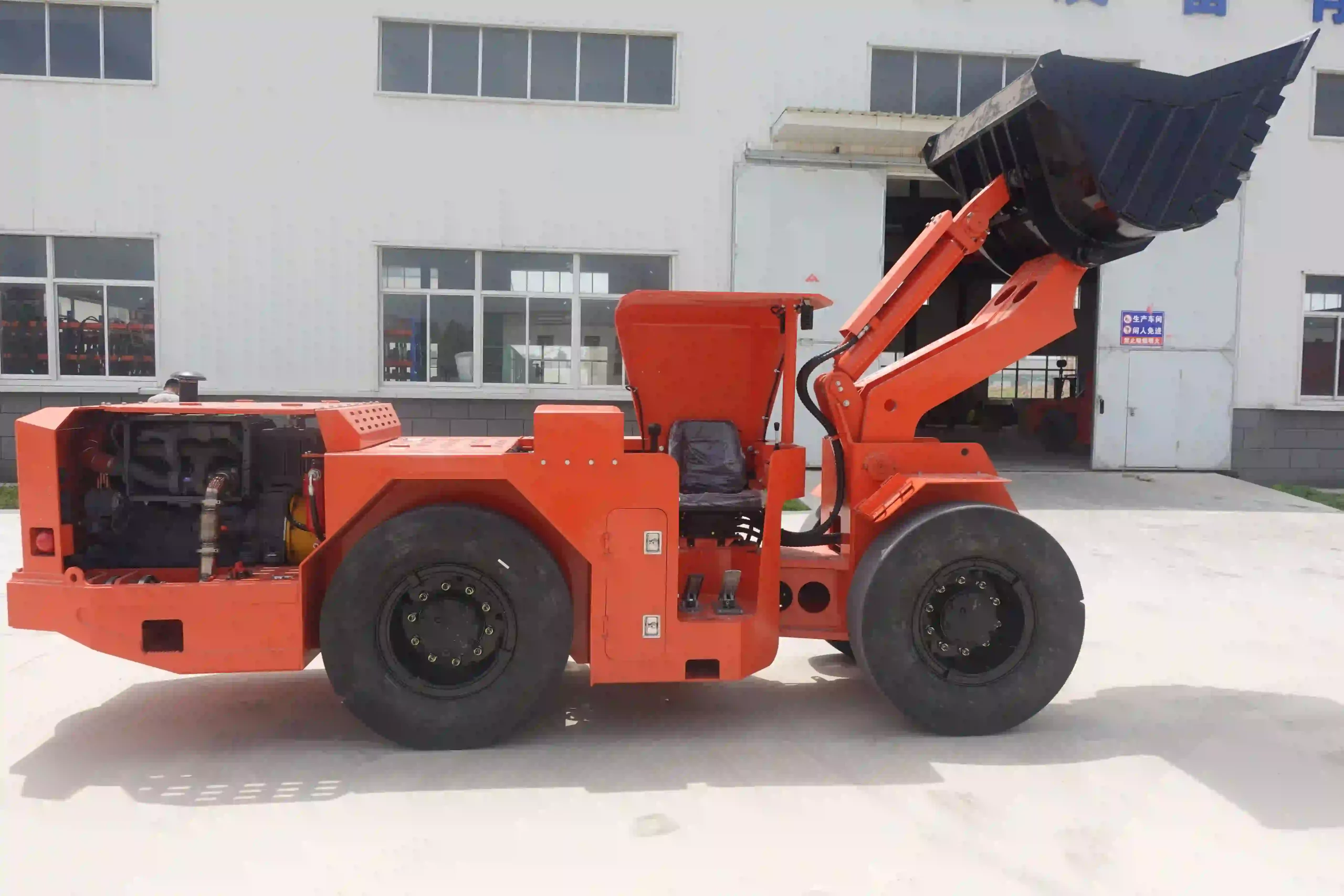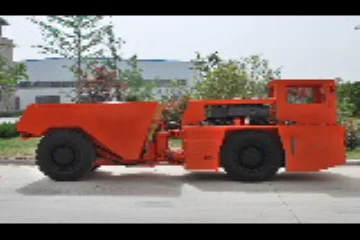Understanding the Basics of an Underground Scooptram
In the complex world of modern mining logistics, the underground scooptram stands as a critical component in facilitating efficient operations. An Underground Scooptram, also known as a Load Haul Dump (LHD) machine, is used primarily in underground mining to load mined material, transport it, and dump it at designated locations. These robust vehicles are designed to work in confined spaces, providing enhanced maneuverability and operational efficiency even in challenging mining environments.
Historical Development and Evolution
The underground scooptram has evolved significantly since its inception. In the early days of mining, manual labor and rudimentary tools were used to move materials, which was both time-consuming and hazardous. Over time, mechanization introduced basic loaders that required human operators to be in close proximity to potentially dangerous materials. Today, modern scooptrams are highly advanced, incorporating state-of-the-art technology to enhance performance, safety, and environmental sustainability. The transition from primitive loading tools to sophisticated machinery reflects the ongoing commitment of the mining industry to improving operational standards and worker safety.
Comparing Traditional and Modern Scooptrams
Comparing traditional and modern scooptrams reveals the vast improvements made in the field of mining logistics. Traditional scooptrams were often limited by their mechanical simplicity, resulting in lower efficiency and higher maintenance costs. Modern scooptrams, on the other hand, incorporate hydraulic systems, advanced control interfaces, and powerful engines that significantly boost productivity. Furthermore, the integration of digital technologies such as real-time monitoring systems, GPS navigation, and automated functions marks a significant leap forward, enabling more precise operations and reducing human error.
Enhanced Efficiency in Underground Mining with Scooptram
Faster Material Handling and Transportation
The advent of the underground scooptram has revolutionized material handling and transportation in mining operations. These machines are designed to move large volumes of material swiftly and efficiently. Key performance metrics highlight their operational speed, haul capacity, and fuel efficiency, which collectively contribute to substantial productivity gains. For instance, some modern scooptrams can transport up to 18 tons of material in a single trip, drastically reducing the number of trips required and, consequently, the overall operational time.
Key Performance Metrics
Performance metrics play a crucial role in assessing the capabilities of an underground scooptram. These include the load capacity, cycle time, and fuel consumption. A high load capacity means more material can be moved per trip, while short cycle times ensure rapid loading and unloading processes. Additionally, fuel-efficient designs minimize operational costs and environmental impact. Together, these metrics offer a comprehensive view of how effectively a scooptram can enhance mining operations.
Operational Speed and Productivity Gains
Operational speed and productivity gains are among the most notable benefits of using underground scooptrams. Advanced scooptrams are equipped with powerful engines and sophisticated hydraulic systems that enable fast and efficient material handling. This results in a significant reduction in the time required to transport materials from the mining site to processing areas. The increased speed not only boosts productivity but also allows mining companies to meet project deadlines more consistently, thereby improving overall operational efficiency.
Reducing Downtime and Increasing Mine Output
One of the primary goals in mining operations is to minimize downtime and maximize output. Modern underground scooptrams are designed with features that reduce the likelihood of mechanical failures and operator errors. Their automated functions, coupled with remote operation capabilities, ensure continuous operation even in challenging conditions. By reducing the time spent on repairs and maintenance, scooptrams enable mines to operate more efficiently and increase their overall output.
Automated Functions and Remote Operations
The integration of automated functions and remote operation capabilities in scooptrams has transformed mining logistics. Automated features such as self-loading, real-time data collection, and machine health monitoring allow for smoother operations with less human intervention. Remote operation capabilities are particularly beneficial in hazardous environments, as they enable operators to control the machine from a safe distance. This not only enhances safety but also ensures continuous operation, even in areas where human presence may be restricted.
Safety Improvements via Advanced Scooptrams
Innovations in Machine Design for Worker Safety
Safety is a paramount concern in the mining industry, and modern scooptrams have been designed with numerous innovations to protect workers. Ergonomic features ensure that operators can control the machinery comfortably and efficiently. Moreover, advanced navigation systems reduce the risk of accidents by providing precise control and real-time feedback. These design improvements contribute significantly to creating a safer working environment for mining personnel.
Ergonomic Features and Controls
Ergonomic features in scooptram design enhance worker safety by reducing physical strain and fatigue. Adjustable seating, user-friendly control interfaces, and well-designed operator cabins ensure that operators can work in comfort for extended periods. These features not only improve safety by reducing the likelihood of operator errors but also enhance overall productivity by enabling operators to perform their tasks more efficiently.
Advanced Navigation Systems
Advanced navigation systems are integral to the safety features of modern scooptrams. These systems use GPS technology, sensors, and real-time data to provide precise location tracking and navigation assistance. This level of control helps prevent collisions and other accidents, particularly in the confined and often chaotic environments of underground mines. The ability to navigate accurately reduces the risk of damage to both the machinery and the surrounding infrastructure, ensuring safer and more efficient operations.
Collision Avoidance and Proximity Sensors
Collision avoidance and proximity sensors are critical components of contemporary scooptram safety systems. These technologies use radar, lidar, and ultrasonic sensors to detect obstacles and other hazards in the machine’s vicinity. By providing real-time alerts and automatic response mechanisms, these systems significantly reduce the risk of accidents. This not only protects the machinery from damage but also ensures the safety of workers operating in close proximity to the scooptram.
Environmental Considerations in Mining Safety
The environmental impact of mining activities is a growing concern, and modern scooptrams are designed with features that mitigate these effects. Emission control systems, fuel-efficient engines, and alternative fuel options such as electric models are increasingly being adopted to reduce the environmental footprint of mining operations. These advancements not only improve safety but also support sustainable mining practices, aligning with global efforts to reduce the industry’s impact on the environment.
Cost-Effective Solutions for Mining Companies
Lower Operating Costs Compared to Older Equipment
Cost efficiency is a crucial factor for mining companies, and modern underground scooptrams offer significant advantages in this regard. Compared to older equipment, modern scooptrams are more energy-efficient and require less frequent maintenance, which translates to lower operational costs. For instance, contemporary models are designed to optimize fuel consumption, using less fuel to perform the same tasks as less efficient, older machinery.
Energy Efficiency Features
Modern scooptrams come equipped with energy-efficient engines and hydraulic systems that reduce fuel consumption while maintaining high performance. These features are especially important in minimizing operational costs over time. Additionally, energy efficiency helps reduce the environmental impact by lowering greenhouse gas emissions, contributing to more sustainable mining practices.
Maintenance and Longevity
Another cost-saving feature of modern scooptrams is their enhanced durability and reduced maintenance requirements. Advanced engineering and high-quality materials extend the lifespan of these machines, reducing the frequency and cost of repairs and replacements. Regular maintenance is streamlined through diagnostic systems that provide real-time data, identifying potential issues before they escalate into major problems.
Streamlining Workforce Requirements
Modern scooptrams also contribute to cost-effectiveness by streamlining workforce requirements. Advanced automation and remote operation capabilities reduce the need for a large workforce to operate and maintain the machines. This not only cuts labor costs but also enhances safety by minimizing the number of workers exposed to hazardous conditions in underground mining environments.
Sustainable Practices Supported by Modern Scooptrams
Reducing Environmental Footprint Through Cleaner Technology
Environmental sustainability is becoming increasingly important in mining operations, and modern scooptrams play a significant role in promoting cleaner technology. By incorporating advanced emission control systems, alternative fuels, and electric models, scooptrams help reduce the environmental footprint of mining activities. These innovations not only improve air quality but also contribute to the industry’s shift towards more sustainable practices.
Emission Control Systems
Modern scooptrams are equipped with sophisticated emission control systems designed to reduce harmful pollutants released into the environment. These systems use advanced filtration and catalytic technologies to minimize emissions of particulate matter, nitrogen oxides, and other pollutants. By implementing these systems, mining companies can comply with stringent environmental regulations and reduce their ecological impact.
Fuel Alternatives and Electric Models
In addition to emission control systems, many contemporary scooptrams offer the option of using alternative fuels such as biodiesel or even fully electric powertrains. Electric models, in particular, offer the dual benefits of zero emissions and reduced operating costs, as electricity can be more cost-effective and environmentally friendly than traditional diesel. These alternatives represent a significant step forward in the industry’s efforts to adopt more sustainable and cleaner energy sources.
Long-Term Ecological Benefits
The adoption of modern scooptrams with sustainable features provides long-term ecological benefits. Reduced emissions and lower fuel consumption contribute to decreased environmental degradation, preserving natural ecosystems and biodiversity. Furthermore, the enhanced efficiency and longevity of modern scooptrams mean fewer machines are required, further reducing the environmental impact associated with manufacturing and disposal.
Future Trends in Underground Mining Logistics with Scooptram Technology
Emerging Technologies Enhancing Usability
The future of underground mining logistics is poised to be shaped by emerging technologies that enhance the usability and functionality of scooptrams. Innovations such as artificial intelligence (AI) integration and smart data analytics are expected to play significant roles in improving operational efficiency and predictive maintenance.
AI Integration
Artificial Intelligence (AI) integration into scooptram technology holds the promise of further revolutionizing mining operations. AI algorithms can analyze vast amounts of data to optimize machine performance, predict maintenance needs, and even assist in real-time decision-making. This results in better resource allocation, reduced downtime, and enhanced overall operational efficiency.
Smart Data Analytics and Predictive Maintenance
Smart data analytics and predictive maintenance technologies enable real-time monitoring and data analysis of scooptram operations. These systems can predict potential failures before they occur, allowing for preventative maintenance that minimizes downtime and ensures continuous operation. By utilizing data-driven insights, mining companies can enhance the reliability and longevity of their equipment.
The Role of Electric and Autonomous Vehicles in Mining
The integration of electric and autonomous vehicles into mining operations is another exciting trend shaping the future of underground logistics. Electric vehicles offer significant environmental and cost benefits, while autonomous vehicles enhance safety and efficiency by reducing the reliance on human operators in hazardous conditions.
Enhancing Overall Mine Logistics and Planning
Strategic Deployment of Scooptrams for Optimized Workflow
Optimizing the deployment of scooptrams is crucial for enhancing overall mine logistics and planning. Strategic deployment involves using data and analytics to allocate resources efficiently, ensuring that scooptrams are utilized where they can provide the maximum benefit. This reduces idle time and enhances the overall productivity of mining operations.
Real-Time Monitoring and Fleet Management Systems
Real-time monitoring and fleet management systems are instrumental in achieving efficient underground mining logistics. These systems provide real-time data on the location, status, and performance of each scooptram in the fleet. By leveraging this information, mining companies can make informed decisions, optimize workflows, and ensure timely maintenance, ultimately improving the efficiency and safety of their operations.
Yantai Chi Hong Machinery Co., Ltd. offers a range of Underground Scooptrams designed for underground mining operations. These scooptrams are equipped with various features to help mines maximize tonnes and minimize extraction costs.
The CHWJ-0.6 is a narrow-vein loader that has been engineered to optimize machine width, length, and turning radius. It is designed for underground mining and offers features that enhance productivity and efficiency.
The CHWJ-1H is another scooptram designed for narrow-vein tunnel operations. It is equipped with a powerful transmission and torque converter, allowing it to handle heavy loads while minimizing extraction costs.
Similarly, the CHWJ-1 is designed with a hydraustatic pump and motor, optimizing its performance in narrow-vein mining conditions. It offers features that help mines maximize tonnes and minimize extraction costs.
Yantai Chi Hong Machinery Co., Ltd. also offers the CHWJ-1.5 and CHWJ-2 scooptrams. These compact and lightweight loaders are specifically designed for narrow-vein mining. They have high tramming capacities and excellent payload-to-own-weight ratios.
In addition, Yantai Chi Hong Machinery Co., Ltd. offers the CHWJ-3 scooptram, which has a tramming capacity of 6 metric tons. It incorporates the latest LHD technology to provide maximum performance in challenging underground applications.
Overall, Yantai Chi Hong Machinery Co., Ltd.‘s Underground Scooptrams are designed to optimize productivity and efficiency in narrow-vein mining conditions. They offer a range of models with various features to meet the specific needs of underground mining operations.









